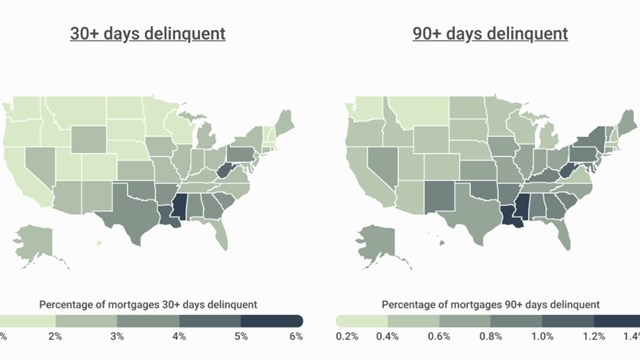Although co-ops make up roughly 80 percent of the available-for-purchase housing stock in New York City, buyers often face this common dilemma when apartment: hunting: should they seek a co-op, or a condo?
Many factors come into play in this decision. But increasingly, especially for first-time buyers, condominiums may be the preferred choice. Instead of ownership of shares in a corporation and the granting of a proprietary lease that are typical of co-ops, condominiums are real property -- and come with less financial scrutiny and requirements. Despite condo prices being roughly 20 percent higher than for equivalent co-op units, condos may also require a smaller down payment.
So before you take that plunge, here are some things to consider.
Financial Requirements
Cash requirements differ between co-op and condominium purchases in three main areas: down payments, required cash reserves, and closing costs. The down payment required for a condominium generally has more to do with the percentage permitted by bank financing than any other factor. In a co-op, though, the board may require a larger percentage down payment than an equivalent condominium unit would command.
Let’s look at a typical scenario. A two-bedroom co-op unit is listed for sale at $1,000,000. The co-op board requires a minimum down payment of 25 percent, or $250,000. An equivalent two-bedroom condominium unit is listed for sale at $1,200,000. The condominium association does not have any financing restrictions, and financing is available for up to 90 percent of the purchase price. The down payment required for purchase would be $120,000. Even at 80 percent financing, a down payment of $240,000 would be $10,000 less than that required for the less expensive co-op.
Co-ops also often require that the purchaser has a certain amount of liquid cash on hand to demonstrate the ability to continue to pay maintenance and co-op mortgage, should he or she become unemployed. That level of cash may be anywhere from one to two years of combined mortgage and maintenance. Assuming typical co-op maintenance for a two-bedroom apartment of approximately $1,200 per month, and a mortgage payment of approximately $3,950 per month ($750,000 mortgage at four percent for 25 years), total monthly carrying costs would be $5,150 per month, which indicates a potential cash liquidity requirement of as much as $123,600. Added to the down payment requirement of 25 percent (and it could be as high as 50 percent), the total cash needed for purchase would be $373,600, which is more than three times needed to purchase the condo, pre-closing costs. Though the co-op appears less expensive, the overall cash necessary to buy it might make it unattainable.
Debt-to-Income Ratio
Another consideration for co-op qualification is the debt-to-income ratio. According to Nick Rafello, a broker with Compass: “The debt-to-income ratio is the sum of the monthly maintenance and mortgage costs multiplied by 12, then divided by your gross income.”
Debt-to-income ratio requirements are usually around 30 percent. So from our example, the co-op would require an annual income of approximately $206,000. Considering the high-tax situation most New Yorkers find themselves in, a substantially higher gross annual income would be required to comfortably carry this unit.
Joanna Mayfield Marks, a broker with Halstead, says: “In Brooklyn, it’s a little different than in Manhattan. A lot of agents come to Brooklyn with preconceived notions about debt-to-income ratios and two years’ maintenance reserve requirements.” It’s lower in Brooklyn; rarely more than a year. Marks recalls a story of a recent client who wanted to purchase a co-op but didn’t have the required liquid cash. The board wanted a year, but she had only about five months. The board worked with Marks' client, eventually agreeing to accept her with a cash gift for the deficit from her sister.
Other Considerations
Real estate agent Bruce Robertson, who is also with Compass, cites another consideration for potential purchasers when making the co-op versus condo decision. He remembers a young woman who bought a co-op some years ago and intended to stay there permanently. A year later, her job transferred her out of the city. The co-op permitted her to sublet the unit for two years, and then for a third. After the third year, she was forced to sell. Subsequently, she lived in various places around the world. Now resettled in New York City, the woman is looking only at condos, as she realizes that works better with her job mobility than a co-op would.
Directing the Client
Any experienced broker knows that the key to maintaining ongoing business is returning clients and recommendations. Therefore, client satisfaction is paramount. Sometimes it’s necessary to steer a client in the right direction, as the last thing a broker or client wants is a rejection of a purchase application. “If a client doesn’t have the necessary financial strength,” says Robertson, “I will steer them to a condo.” But as Rafello points out, condominiums are often hard to find, simply because there are fewer of them available. But with much new construction slated all over New York, condominiums are becoming much more popular. “I never tell them not to look at co-ops, but I show them both,” Marks says of potential house-hunters.
In the final consideration, be a smart buyer. Don’t just look at the price. Look at the whole picture. You may be surprised.
AJ Sidransky is a staff writer at The Cooperator, and a published novelist.







Comments
Leave a Comment